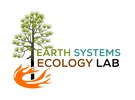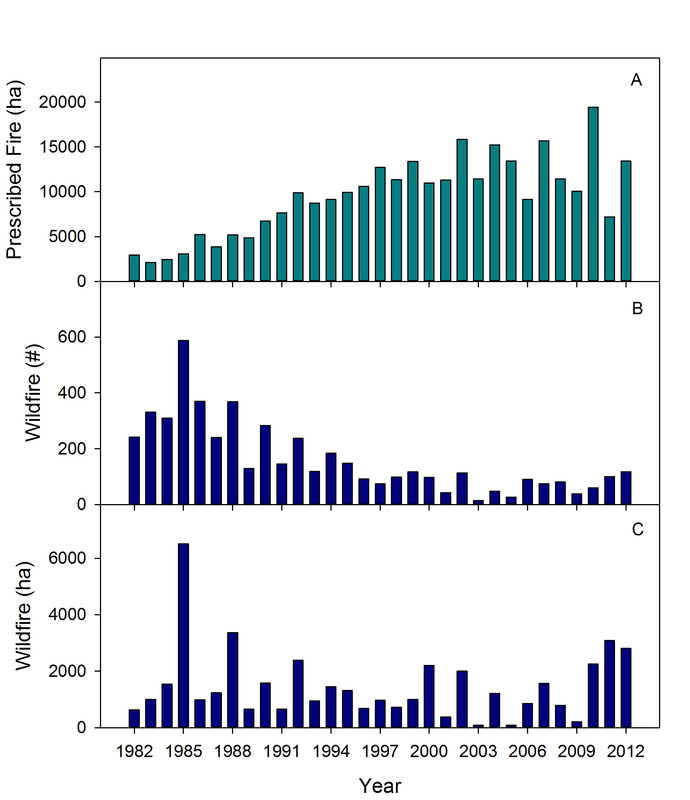|
Fire is a disturbance that affects many ecosystems on the planet; the frequency with which different ecosystems burn is a function of climate and the availability of plant material to burn. Fires typically occur when temperatures are higher and relative humidity is lower. These two variables cause the moisture in plant material to decrease, making it more flammable. Without a decrease in fuel moisture, more energy is required than is available to evaporate all of the water before the fuel will burn. This is precisely why you can’t cut a live tree into fire wood and stick it right into the stove to heat your house. You have to let it “season” so the moisture content drops. Many forest types historically experienced frequent fire. These forests are characterized in part by the fact that at some point during the year, conditions are right for an ignition to turn into a fire. These forests are typically fuel limited, meaning that if a fire occurred recently there is unlikely to be sufficient fuel left to carry the fire. The longleaf pine forests of the southeastern US are a frequent fire forest, but they typically aren’t fuel limited because of the long growing season and rainy winters. This allows vegetation to recover quickly after a fire. Historically these forests experienced fire every 2-4 years. When we consistently prevent fires from burning, plant material or fuel builds up and unplanned ignition events, think lightening, a burning cigarette, or on a military installation – artillery, can cause wildfires. In our most recent paper, led by Rob Addington of the Colorado State Chapter of The Nature Conservancy, we investigated the relationship between prescribed burning and wildfire activity at Fort Benning in Georgia. Natural resource managers at Fort Benning have been restoring longleaf pine forests and fire as a process to maintain them. You can read more about it in a previous post. We used a 30-year record of wildfire and prescribed fire occurrence to answer the question – does increasing prescribed fire use reduce wildfire frequency and area burned by wildfire? We also wanted to understand how drought might influence this relationship. We found that as the number of hectares (1 hectare = 2.47 acres) burned with prescribed fire increased over the 30-year period, the number of wildfires decreased by about half. When we included drought and area burned by prescribed fire in the previous year, we explained 80% of the year-to-year variation in number of wildfires. When we did the same with area burned by wildfire we explained 54% of the year-to-year variation. Figure: The top panel (A) is the number of hectares burned by prescribed fire each year. The middle panel (B) is the total number of wildfires each year. The bottom panel (C) is the number of hectares burned by wildfire each year. As we previously found, regular burning is important for restoring and maintaining longleaf pine forest. This research shows that by restoring fire using prescribed burning, managers can also reduce the number of and area burned by wildfire.
0 Comments
|
Details
Archives
October 2023
Categories
All
|


 RSS Feed
RSS Feed